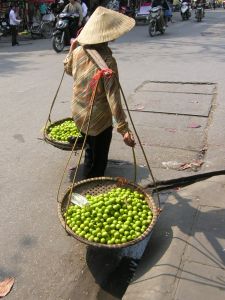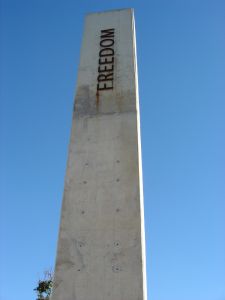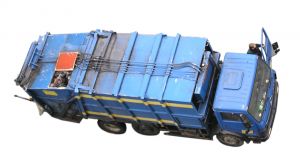Cluster 1 Poetry
Cluster 1: Limbo by Edward Kamau Brathwaite
Theme
The title ‘Limbo’ is an African dance and the poem could be about slaves being captured and taken on a ship to a new land. The use of a 1st person narrative also helps to reinforce the idea that this is the poet’s culture and allows us to gain a greater understanding of his emotions towards slavery. There is a significant amount of ambiguity in the poem, which means there can be many interpretations of one thing, for example:
drum stick knock
could act as a reference to the idea of the limbo dance “drum” or represent aggression towards the slaves (maybe even both at once). However you shouldn’t worry about the ambiguity used in the poem, you can use this to your advantage to gain you extra marks in the exam for being imaginative and critical of what you read.
Structure
The structure is also very important in the poem. The idea of the limbo stick is reflected in the length of the lines: long lines are above shorter lines. There is also a lot of enjambment (where a sentence continues onto the next line without punctuation) for example:
stick hit sound
and the ship like it ready
This could have been used to suggest the people’s suffering has no end.
Language
There is a very strong beat in the poem, which may have been used to suggest the idea of a dance. And the italics could also have been used to represent the chorus.
limbo
limbo like me
However, because the chorus is repeated throughout the poem this could have been used to represent the repetitive nature of the ship. The idea of repetitive work and hard labour is also apparent in Brathwaite’s use of sharp vowel sounds:
Stick hit sound
This also provides a vivid contrast with the silence described in the first line of the poem:
And limbo stick is the silence in front of me.
There are also references to religion in the poem: “and the dumb gods are raising me”. This could be a reference towards their own Gods who are not helping them or even a reference towards the whites who he may feel are trying to play God.
The language used in the poem has another purpose, it could also reflect the slaves poor English: “Ship like it ready” is a good example of this.
The rhythm throughout the poem is constant until the last line. This could have been used to suggest the completion of the dance, and the arrival of the slaves, signalling the end to the poem:
on the burning ground.

Cluster 1: Nothings changed by Tatamkhulu Afrika
Theme
The poem is about change or in this case the lack of change that has occurred after the Apartheid has ended in South Africa. One of the main techniques used by the poet is to contrast the whites and the blacks to explore the theme of inequality.
Structure
The structure in the poem is free-style (it doesn’t follow a conventional structure such as an iambic pentameter). The stanzas are of a similar length, except for the smaller stanza in the centre of the poem:
No sign says it is:
but we know where we belong
This could have been used by the poet to represent the idea of a wall dividing the blacks and the whites.
Language
"District Six" is the name of a poor area of Cape Town. The poets expresses his dislike that nothing has changed through a gradual building of anger as the poem progresses, the monosyllabic phrase:
Small round hard stones click
Could represent the poets initial anger, eventually building to:
anger of my eyes
The white diner is pleasant, although there aren’t any signs to say it the black are not allowed in. The white’s are served elegant food “haunte cuisine”. This provides a sharp contrast with the black’s café.
One of the most important images in the poem is the idea of the glass that separates the whites and the blacks. The poet remembers when he was a boy:
leaving small mean O
of small mean mouth
This could represent the shape left by his mouth when pressed on the glass. The poet wants to break this barrier down, he wants:
a stone, a bomb
to shiver down the glass
This could symbolise a psychological as well as physical barrier that still exists between the different races and is an obvious example of injustice. This is very effective and allows us to really begin to understand why the poet is so angry.
Cluster 1: Island man by Grace Nichols
Theme
The poem is about a man who feels he is divided between two cultures, in this case between his Caribbean home and London. The title serves to provide a neat similarity between the two places; the island could be both his home and Britain.
Structure
The structure in the poem is very important. The lines are mostly regular in length; however the poet has also used some more irregular techniques. She has chosen to make line 11 distinctly different to the others in the poem:
he always comes back groggily groggily
the extended space between the phrases could have been used to represent
sea and the waves. The idea of waves is visited in several different ways.
The distinct lack of punctuation throughout the poem and the use of regular
enjambment (the lines continue from one to the other without punctuation),
have a combined effect and could have been used to represent waves or
the fluid movement that occurs within his dream.
Language
The idea of contrasting London with the Caribbean has been best portrayed through the language. Colours play an important role in the poem - the vivid colours “blue surf” and “emerald island” contrasts with the “grey metallic soar” and the “dull North Circular road” used to describe Britain. Grace Nichols has also made use of the way words sound, this is best demonstrated with:
comes back to sands
The word “sands” is very similar to ‘sounds’ and could have been used to suggest the man is waking up to the sounds outside his window. Imagery has also been used in the poem to great effect. The phrase:
his crumpled pillow waves
links back to the idea of waves from earlier in the poem and helps to give the poem a clearer message. The poem concludes with a long vowel sound:
heaves himself
which helps to emphasise his waking up. The final line is broken off which could have been used by the poet to represent his return to reality.

Cluster 1: Blessing by Imtiaz Dharker
Theme
This poem is about how water, a thing often taken for granted in our country is considered so precious in other countries that it is seen as a gift from god. Whilst the poem is titled “blessing” one of the most confusing things is that this blessing may not be a blessing at all and may instead cause them to go thirsty or even die in the following weeks. The culture portrayed in the poem is deeply religious, describing the pipe bursting as a gift from a “kindly god”.
Structure
The structure in the poem is fairly standard taking the form of speech, the poet speaking to us, as the audience.
Language
The poem opens with a simile, comparing skin with a pod. The poet then speaks to us directly asking us to “Imagine”. This helps to engage us and in turn makes the poem more effective. The poet makes frequent use of imagery throughout the poem. She describes how:
silver crashes to the ground
this compares water with a precious metal, which allows us to see the value her culture places on something we often take for granted. The value of water is also emphasised by the reaction of people to the pipe bursting:
the congregation: every man woman
child for streets around
butts in, with pots,
They clearly need the water and are trying to collect as much as possible. The title ‘Blessing’ has some religious connotations. The idea of religion is reflected in the way the poet compares water to:
The voice of a kindly god
The crowd that forms when the pipe bursts links with this idea, it is described as a “congregation”, a religious gathering. The poem ends with quite an emotional image; the poet describes how the children play in the water. However, this image is overshadowed by the description of the light dancing:
over their small bones
whilst this could be emphasising the children’s young age, it could also have been used to suggest they are malnourished, reinforcing the idea that today’s miracle could bring tomorrows drought.
Cluster 1: Two scavengers in a truck, two beautiful people in a Mercedes by Lawrence Ferlinghetti
Theme
The poem focuses on the sharp contrast between the rich, ‘two beautiful people in a Mercedes’ and the poor ‘two scavengers in a truck’. The poem is set in America, reflected in the spelling of blonde as “blond”. The poem is written in the present tense which helps us to visualise the situation but could also suggest that the divide between rich and poor is a problem now and should be dealt with.
Structure
The structure of the poem is very effective. The lines are indented at different places on the page and there is a distinct lack of any punctuation. This could have been used to suggest that the poet feels society is broken; it reflects the un-solidarity that can occur within a democracy.
Language
The poem opens with the image of the people all waiting at a stoplight. This is democratic, they all must wait until it turns green, however as the poet begins to delve deeper this sense of democracy becomes almost undermined. The poet makes use of static vocabulary “waiting”, “hanging” which helps to emphasise the contrast between the two groups of people.
The poet directly contrasts the two groups of people well. Colours play an important role in the description, whilst the garbage men are wearing brightly coloured clothes the beautiful people are wearing much plainer attire, a “linen suit”, this could suggest that the garbage men have more emotion and colour to their lives.
The contrast is most vivid through the comparison of one of the beautiful people and the scavengers:
also with sunglasses & longhair
about the same age as the Mercedes driver
There is also a contrast between the sophisticated clothing of the beautiful people “in a hip three-piece suit”, compared to the scavengers who are described as “grungy” and are likened to the hunchback of Notre-Dann:
gargoyle Quasimodo
The poet then moves on to describe how the scavengers feel like they are not looking at real people, but at characters in a TV show, as if they could never aspire to become them.
as if they were watching some odourless TV ad
in which everything is always possible
They see them as “odourless” which could have been used to suggest that the smelly garbage truck is reality whilst the beautiful people’s life is only a dream. The phrase “in which everything is always possible” has a slightly sarcastic tone, which could suggest that it is not possible for the scavengers to ever become the beautiful people. This is described in the poem as a “small gulf” a gap that is too far to cross. The garbage men look at them “as from some great distance” which could symbolise the completely separate lives the two groups of people lead.
The poem concludes with the phrase:
across the high seas
of this democracy
This could have been used to link with the structure of the poem and suggest that these people have been merely washed together for that one moment and soon they will drift apart, forever separated.
Cluster 1: Night of the Scorpion by Nissim Ezekiel
Theme
The poem focuses on what happens when a mother is stung by a scorpion. Surprisingly the poet portrays both the Scorpion and the mother as victims. The poem focuses on the sharp contrast between the selfless courage of the mother and the ignorant, fear driven reactions of her community. The poem starts off in the first person but then makes the transition to the third person. The child who is describing his mothers ordeal becomes an almost narrator to the poem describing the reactions of the community.
Structure
The text is divided into two solid bocks of text, which could symbolise the inner strength of the mother. The contrast between the courage of the mother and the reaction of the ‘peasants’ is also portrayed in the use of a long stanza to depict the peasants reactions and a much shorter stanza describing the mothers selfless courage in being glad the scorpion stung her and not her children.
Language
The poet makes use of subtle references to have a profound effect on
the reader, “Ten hours of steady rain had driven him to crawl beneath
a sack of rice.” Here the poet creates an almost sympathetic image
of the scorpion, as though it only stung the mother out of fear not because
of any evil nature as suggested by the peasant’s reactions:
To paralyze the Evil One.
The use of capitals for the phrase “Evil One” could have been used to suggest the people recognise the devil within the Scorpion. This helps to emphasise the irrational nature that can be exposed when panic erupts. The people acting on instincts are best summed up with the simile:
The peasants came like swarms of flies
and buzzed the name of God a hundred times
Even the father who is described as a “sceptic, rationalist”, tried anything to help the mother:
Trying every curse and blessing,
powder, mixture, herb and hybrid.
However, it is time that begins to dull the pain. The conclusion of the poem is extremely effective: the poet describes how the mother was glad that the scorpion chose to sting her and not her children as they may not have been able to stand the pain.

Cluster 1: Vultures by Chinua Achebe
Theme
This poem is one of the more difficult ones to analyse. It basically focuses on the poet’s interpretation of human nature, even the title of the poem ‘Vultures’ could be a metaphor for the evil nature of humans.
Structure
The poem doesn’t have a distant structure in the conventional sense but it does move through the poem in a decisive order: it begins with the image of vultures; then subtly links this with life in itself; next moving on to mirror the image of vultures with the actions taken by the Commandant at Belsen Camp, who is responsible for the mass-murder of thousands of people, and then finally links the image of vultures together with the actions of the Commandant to give an overall interpretation of life itself. This allows us, as the audience, to see how the poet has came to their conclusions about human nature.
Language
The poem makes continued and effective use of imagery, describing the vultures as disgusting creatures:
bashed-in head, a pebble
on a stem rooted in
a dump of gross
feathers, inclined affectionately
However, despite this horrible description the vultures are described as caring for each other: “inclined affectionately” suggests they may even love each other. This provides an oxymoron (sharp contrast) that exists between good and evil. The poet also makes effective use of punctuation to merge the image of the vultures with the more generalised image of life itself:
telescopic eyes…
The punctuation could also represent how good and evil can often be merged together as dislayed through the vultures. The poet then gives a description of how they feel it’s strange that love can be housed within a “charnel-house” or a morge. This follows on to describe the Commandant at Belsen and how the smell of the burning dead bodies won’t leave him:
the day with fumes of
human roast clinging
rebelliously to his hairy
nostrils will stop
The word “rebelliously” could have been used to suggest that no matter how hard he tries he cannot put the sights and smells of what he has done out of his mind. However, like the vultures despite his awful actions he can still show some signs of love:
and pick up a chocolate
for his tender offspring
The use food, the human roast and the chocolate links together and helps to reinforce the divide between good and evil. The conclusion of the poem is difficult to understand, on the one hand the poet suggests that there is hope that allows “even an ogre” to have a “tiny glow-worm of tenderness encapsulated in icy caverns of a cruel heart”. However the poet then moves on to state “or else despair for in the very germ of that kindred love is lodged the perpetuity of evil” this could suggest that it is the fact that we can love someone that means we sometime have to do evil actions in order to give the person we love what they desire.

Cluster 1: What Were They Like? By Denise Levertov
Theme
The poem was written in the 1960’s during the height of the Vietnam War. In the poem the poet describes a future in which the people of Vietnam can no longer remember their culture and paints a sad and emotional image of their destroyed lives.
Structure
The poem has a very effective structure. It is laid out as a series of questions and the corresponding answers beneath. This allows the audience to read the answers whilst looking back at the original questions.
Language
The first question allows us as the audience to immediately see the Cultural worth through the use of the Vietnamese spelling of “Viet Nam”. The poet then moves on to question two with the phrase “opening of buds?” which could symbolise the celebration of new life. However, when you begin to read the answers to these questions the only answer given is despair.
The question asking whether “the people of Viet Nam use lanterns of stone?” is answered with the metaphor “their light hearts turned to stone”, which could suggest the war has left them emotionless. The poet then states “It is not remembered” and this is again repeated in question five. For the question asking whether they hold ceremonies to reverence the “opening of buds”, “there were no more buds” is given as the answer, which could suggest that the people and therefore their culture is now dead.
For the third question the poet answers with:
3) Sir, laughter is bitter to the burned mouth.
The use of alliteration helps to emphasise their pain and the phrase “burned mouth” could also suggest that they have been burned by fire or even by napalm attack. This idea is repeated in the answer to question four, “All bones are charred”, could suggest they have also been destroyed or burned.
In the answer to question five the poet uses the phrase:
When peaceful clouds were reflected in the paddies
And then moves on to state:
When bombs smashed those mirrors
This acts as a metaphor for the destruction of the paddies. The poet then finishes the poem with the image of “the flight of moths in the moonlight” but then concludes with “Who can say? It is silent now.” Which could suggest the people have now forgotten their culture.
On the whole the poem is very effective, and was very effective when
it was written in the 1960s. However, because it is now proven that the
image painted by the poet has not become a reality it could suggest the
poem lacks foundation. Furthermore, because the poem was written by a
western poet she is creating an image of the Vietnamese people that may
not be a representation of reality.

Reference Tools
Dictionary
Thesaurus
Maps
Scientific Calculator
Periodic Table
Translator
Unit Conversion
Resources
General Writing Techniques
English Language
The Course
Media Texts
Advise, Persuade or Argue
Writing to Advise
Writing to Persuade
Writing to Argue
Poetry from Different Cultures
Cluster 1 Poetry
Cluster 2 Poetry
Poetry Analysis
Describe, Inform or Explain
Writing to Describe
Writing to Inform
Writing to Explain
English Literature
Poetry Introduction
Carol Ann Duffy
Simon Armitage
Pre-1914 Poetry
Structuring an Essay
To Kill a Mockingbird
Introduction
Characters
Themes
Essay Plans



